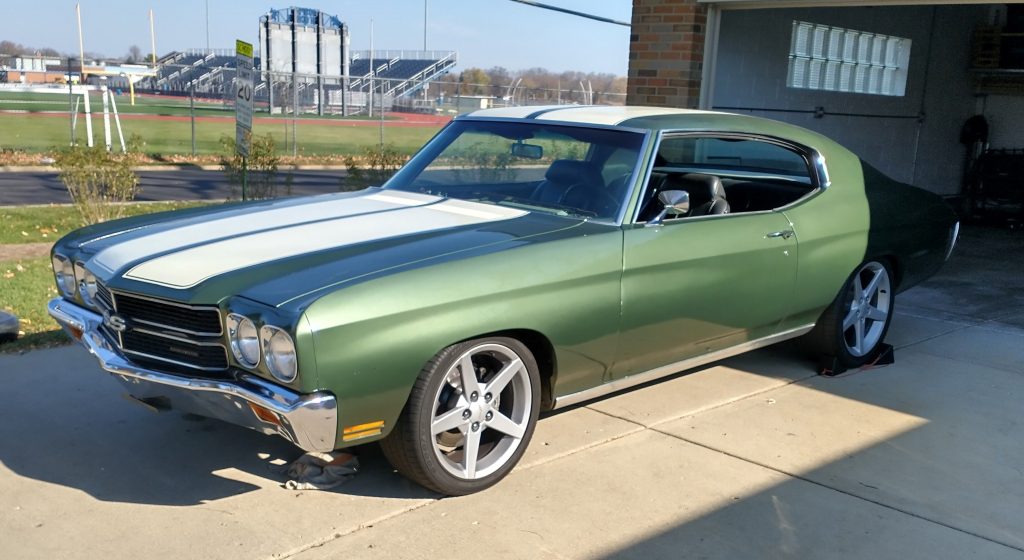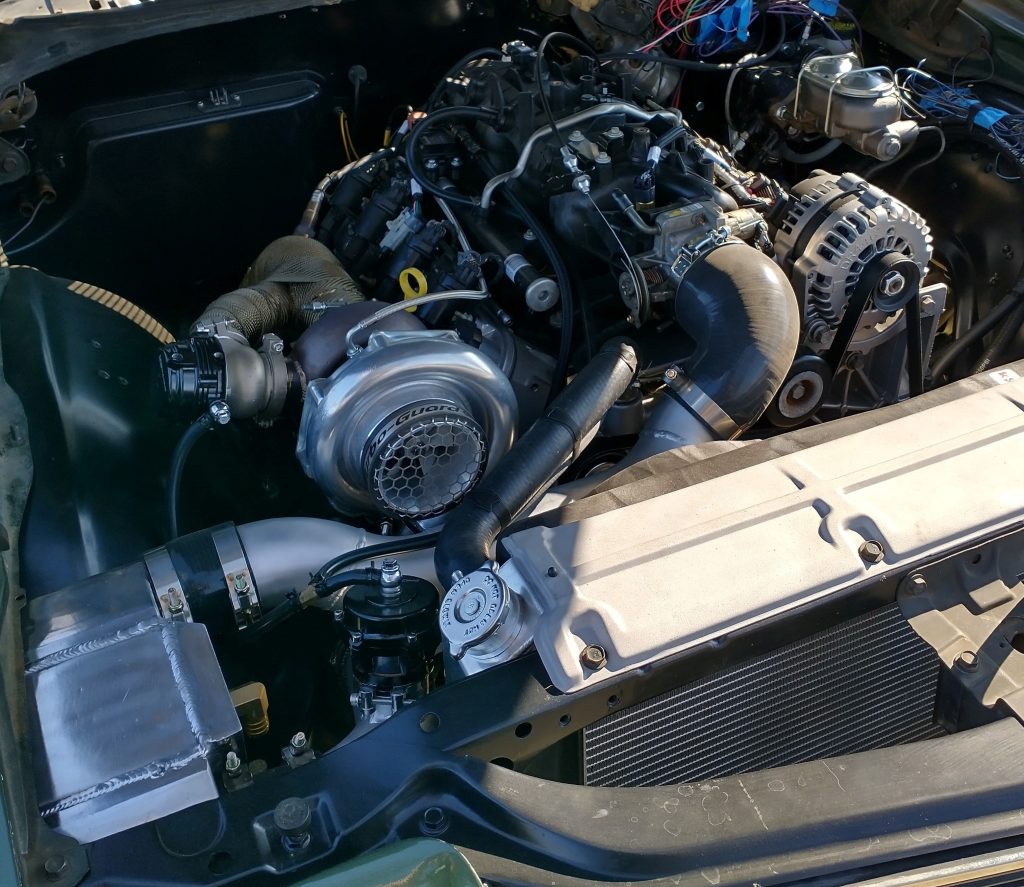Matthew Bochnak runs the How-To Motorcycle Repair channel on YouTube. If something is ailing your street or motocross bike, chances are Matt has a video that will help you diagnose and fix the problem.
But Matt has a little secret: he likes horsepower, and lots of it. His power platform of choice is a 1970 Chevy Chevelle he’s owned for 17 years. Matt has documented the build from teardown to test driving—64 episodes in total. He’s nothing if not thorough.
Matt replaced the four-wheel manual drums with C5 Corvette disc brakes, rebuilt the front suspension, and lowered the car. Under the hood was a small block 350 with a mild cam, a four-barrel carburetor, and headers. It was attached to a Turbo 350 automatic transmission and a 10-bolt rear axle with 2.73 gears.
That 350 simply would not do, so Matt decided to build a turbocharged LS engine for the Chevelle. Being a mechanical engineer by trade, he did a lot of research and came to the conclusion that a 5.3L iron block LS with a stock bottom end and stock cylinder heads would be able to handle around 500 horsepower running either gasoline or E85. Learn more about the build in this story.
Matt also swapped the Turbo 350 for a Tremec T-56 Magnum six-speed and the 10-bolt for a 12-bolt rear axle with 3.73 gears and a limited slip.

Matt’s also a pretty good fabricator. He designed and 3D-printed a bracket to mount the hydroboost brake unit and the slave cylinder for the T-56 on the firewall. He also 3D-printed tubing pieces that he used to build a template for the intake and intercooler plumbing. He then fabricated the plumbing out of three inch diameter stainless steel tubing, using a clever ICEngineworks tubing pattern kit with premade pieces to help design the layout.
Matt also designed an intercooler water tank and a turbo oil drain that plumbs into the timing cover as there was not enough room to plumb one directly to the oil pan. He even taught himself how to TIG weld so he could fabricate these components.
Another first for Matt was tuning a turbocharged and fuel injected engine. He used a Holley Terminator X engine management system to create tunes for the Chevelle. On his first go-around, he created a very conservative tune for 93 octane gas. Boost was set at 3 pounds with an air/fuel ratio on the rich side (11.5:1 under boost) and 17 degrees of timing under boost (38 degrees total). He also set the rev limiter at 5,000 RPM. The ECU did not control the turbo—it was controlled by the wastegate only.

Fast-forward to the fall. After going through some 40-odd tunes and tweaking things here and there, Matt had created a tune for E85 fuel with six pounds of boost and 20 degrees of timing under boost. There is an ethanol sensor to measure the actual ethanol content in the fuel—the ECU backs out timing if the ethanol level goes below E50 (50% ethanol). Matt says the Chevelle will now fry the tires in first and second gear until it finally gets traction in third.
There are some tasks to complete before declaring the Chevelle done. Matt wants to modify the tuneup to smooth out the deceleration curve from high speed and cure some starting issues at various temperatures. He also needs to install a quieter three inch exhaust system to keep the neighbors happy, plumb the intercooler, finish the interior, and hook up the headlights. With Old Man Winter knocking at the door, there will be plenty of time to do all of that.
You can see the entire build series on Matt’s YouTube channel. Be sure to stock up on snacks and beverages. Putting in for some vacation time would be a good idea too.

Comments